Optimal Configuration of Wind-PV and Energy Storage in Large Clean Energy Bases
Abstract
:1. Introduction
2. Methodology
2.1. Optimal Configuration of Energy Storage and Multi-Form Power Sources
2.1.1. Objective Function
- This section researched multi-form power sources and energy storage. The clean energy base is equipped with optimal wind power, PV and energy storage capacity to meet the power supply demand. According to the characteristics of each power source in the power supply system, a capacity allocation model is established with the least investment cost and energy storage capacity of the power system, considering constraints such as power balance, SOC, and hydroelectric units. At the same time, the calculation results are evaluated in terms of load power shortage rate, charging and discharging times of energy storage and starting and stopping times of thermal power units [10,11]. Minimize the total investment cost of the system
- 2.
- Minimize the energy storage capacity
2.1.2. Constraints
- 2.
- 3.
2.1.3. Evaluation Indexes
- 2.
2.2. Strategy Optimization of Energy Storage and Multi-Form Power Sources Operation
2.2.1. Coupling Mode between Energy Storage and Multi-Form Power Sources
- Main power connection transmission network
- 2.
- Energy storage connected to the main grid
- 3.
- Load distribution network
2.2.2. Coordinated Operation Mode between Energy Storage and Multi-Form Power Sources
- Coordinated operation strategies between multi-form power sources and energy storage
- 2.
- Energy-based scheduling strategy
3. Structure of Clean Energy Base
3.1. System Structure
3.2. Power Characteristics
3.2.1. Research on Wind Power Characteristics
3.2.2. Research on PV Characteristics
3.2.3. Research on Thermal Power Characteristics
3.2.4. Energy Storage
- Battery energy storage
- 2.
- Thermal energy storage
3.2.5. Hydrogen Energy
4. Case Study
4.1. System Modeling
4.1.1. Wind Power Generation System Model
4.1.2. PV Power Generation System Model
4.1.3. Thermal Power Generation System Model
4.1.4. Battery Energy Storage System Model
4.1.5. Hydrogen Energy System Model
4.2. Power Demand and Generation Characteristics
4.2.1. Power Demand
4.2.2. Generation Characteristics
- Characteristics of new energy power generation
- 2.
- Characteristics of thermal power generation
4.3. Reverse Design with the Goal of Stable Output
4.4. Results and Discussion
4.4.1. Optimal Configuration Scheme
4.4.2. Economic Analysis
- Optimize configuration
- 2.
- Energy storage and multi-form power supply operation strategy
| Indexes | Value | Indexes | Value |
|---|---|---|---|
| Static investment in engineering | 120.353 billion yuan | Unit investment (converted) | 7522.06 Yuan/kW |
| Dynamic investment in engineering | 1236.61 billion yuan | Unit investment (converted) | 7728.81 Yuan/kW |
| Interest incurred during construction | 28.28 billion yuan | Working capital | 4.80 billion yuan |
| Electricity price (tax excluded) | 326.55 Yuan/MWh | Electricity price (tax included) | 369.00 Yuan/MWh |
| Financial internal rate of return on capital | 6.68% | Internal rate of return of bank finance | 6.84% |
| Total return on investment ROI | 5.53% | Net profit rate of capital ROE | 9.65% |
| Cash flow analysis of project investment | |||
| Internal rate of return (%) | Net present value (billion yuan) | Investment pay-back period (year) | |
| Before income tax | 8 | 108.23 | 11.86 |
| After income tax | 6.83 | 90.33 | 12.71 |
| Indexes | Value | Indexes | Value |
|---|---|---|---|
| Static investment in engineering | 853.53 billion yuan | Unit investment (converted) | 8334.56 Yuan/kW |
| Dynamic investment in engineering | 878.38 billion yuan | Unit investment (converted) | 5489.88 Yuan/kW |
| Interest incurred during construction | 20.05 billion yuan | Working capital | 4.80 billion yuan |
| Electricity price (tax excluded) | 246.90 Yuan/MWh | Electricity price (tax included) | 279.00 Yuan/MWh |
| Financial internal rate of return on capital | 7.61% | Internal rate of return of bank finance | 7.55% |
| Total return on investment ROI | 5.99% | Net profit rate of capital ROE | 10.95% |
| Cash flow analysis of project investment | |||
| Internal rate of return (%) | Net present value (billion yuan) | Investment pay-back period (year) | |
| Before income tax | 8.52 | 118.17 | 11.41 |
| After income tax | 7.30 | 101.33 | 12.24 |
5. Conclusions
- (1)
- A new idea for base system optimization and operation scheduling strategy research is proposed
- (2)
- The optimal configuration of the base is completed, and the thermal storage and electricity storage are combined for operation
- (3)
- The economic feasibility evaluation is completed
Author Contributions
Funding
Institutional Review Board Statement
Informed Consent Statement
Data Availability Statement
Conflicts of Interest
References
- Hamdi, M.; Ragab, R.; El Salmawy, H.A. The value of diurnal and seasonal energy storage in baseload renewable energy systems: A case study of Ras Ghareb–Egypt. J. Energy Storage 2023, 61, 106764. [Google Scholar] [CrossRef]
- Zhu, Y.; Xu, Y.; Chen, H.; Guo, H.; Zhang, H.; Zhou, X.; Shen, H. Optimal dispatch of a novel integrated energy system combined with multi-output organic Rankine cycle and hybrid energy storage. Appl. Energy 2023, 343, 121113. [Google Scholar] [CrossRef]
- Elberry, A.M.; Thakur, J.; Veysey, J. Seasonal hydrogen storage for sustainable renewable energy integration in the electricity sector: A case study of Finland. J. Energy Storage 2021, 44, 103474. [Google Scholar] [CrossRef]
- Emrani, A.; Berrada, A.; Bakhouya, M. Optimal sizing and deployment of gravity energy storage system in hybrid PV-Wind power plant. Renew. Energy 2022, 183, 12–27. [Google Scholar] [CrossRef]
- Chennaif, M.; Zahboune, H.; Elhafyani, M.; Zouggar, S. Electric System Cascade Extended Analysis for optimal sizing of an autonomous hybrid CSP/PV/wind system with Battery Energy Storage System and thermal energy storage. Energy 2021, 227, 120444. [Google Scholar] [CrossRef]
- Emad, D.; El-Hameed, M.A.; El-Fergany, A.A. Optimal techno-economic design of hybrid PV/wind system comprising battery energy storage: Case study for a remote area. Energy Convers. Manag. 2021, 249, 114847. [Google Scholar] [CrossRef]
- Olabi, A.; Onumaegbu, C.; Wilberforce, T.; Ramadan, M.; Abdelkareem, M.A.; Alami, A.H.A. Critical review of energy storage systems. Energy 2021, 214, 118987. [Google Scholar] [CrossRef]
- Jing, W.L.; Lai, C.H.; Wong, W.S.; Wong, D.M. Smart hybrid energy storage for stand-alone PV microgrid: Optimization of battery lifespan through dynamic power allocation. Appl. Mech. Mater. 2016, 833, 19–26. [Google Scholar] [CrossRef]
- Roy, P.K.; Karayaka, H.B.; Yan, Y.; Alqudah, Y. Evaluation of reference generation algorithms for dispatching solar PV power. In Proceedings of the SoutheastCon 2018, St. Petersburg, FL, USA, 19–22 April 2018; pp. 1–7. [Google Scholar]
- Li, Y.Z.; Guo, X.J.; Dong, H.Y.; Gao, Z. Optimal capacity allocation of hybrid energy storage system in wind/light/storage microgrid. Power Syst. Its Acta Autom. Sin. 2020, 32, 123–128. [Google Scholar]
- Xu, X.; Hu, W.; Cao, D.; Huang, Q.; Chen, C.; Chen, Z. Optimized sizing of a standalone PV-wind-hydropower station with pumped-storage installation hybrid energy system. Renew. Energy 2020, 147, 1418–1431. [Google Scholar] [CrossRef]
- Wu, J.; Su, H.; Meng, J.; Lin, M. Electric vehicle charging scheduling considering infrastructure constraints. Energy 2023, 278, 127806. [Google Scholar] [CrossRef]
- Chen, J.; He, H.; Quan, S.; Zhang, Z.; Han, R. Adaptive energy management for fuel cell hybrid power system with power slope constraint and variable horizon speed prediction. Int. J. Hydrogen Energy 2023, 48, 16392–16405. [Google Scholar] [CrossRef]
- Guo, H.; Lu, S.; Hui, H.; Bao, C.; Shangguan, J. Receding horizon control-based energy management for plug-in hybrid electric buses using a predictive model of terminal SOC constraint in consideration of stochastic vehicle mass. Energy 2019, 176, 292–308. [Google Scholar] [CrossRef]
- Zhang, X.; Li, D.; Yang, Z.; Tian, L.; Meng, J.; Liu, Y.; Fu, C. Fuzzy adaptive virtual inertia control of energy storage systems considering SOC constraints. Energy Rep. 2023, 9, 2431–2439. [Google Scholar] [CrossRef]
- Li, G.; Zhang, J.; He, H. Battery SOC constraint comparison for predictive energy management of plug-in hybrid electric bus. Appl. Energy 2017, 194, 578–587. [Google Scholar] [CrossRef]
- Li, H.; Liu, W.; Yu, L. Centralized-local PV voltage control considering opportunity constraint of short-term fluctuation. Glob. Energy Interconnect. 2023, 6, 81–91. [Google Scholar] [CrossRef]
- Gholami, M.; Shahryari, O.; Rezaei, N.; Bevrani, H. Optimum storage sizing in a hybrid wind-battery energy system considering power fluctuation characteristics. J. Energy Storage 2022, 52, 104634. [Google Scholar] [CrossRef]
- Zhu, Y.; Zhai, R.; Yang, Y.; Reyes-Belmonte, M.A. Techno-economic analysis of solar tower aided coal-fired power generation system. Energies 2017, 10, 1392. [Google Scholar] [CrossRef]
- Elio, J.; Milcarek, R.J. A comparison of optimal peak clipping and load shifting energy storage dispatch control strategies for event-based demand response. Energy Convers. Manag. X 2023, 19, 100392. [Google Scholar] [CrossRef]
- Sousa, J.; Lagarto, J.; Camus, C.; Viveiros, C.; Barata, F.; Silva, P.; Alegria, R.; Paraíba, O. Renewable energy communities optimal design supported by an optimization model for investment in PV/wind capacity and renewable electricity sharing. Energy 2023, 283, 128464. [Google Scholar] [CrossRef]
- Khah, M.V.; Zahedi, R.; Eskandarpanah, R.; Mirzaei, A.M.; Farahani, O.N.; Malek, I.; Rezaei, N. Optimal sizing of residential photovoltaic and battery system connected to the power grid based on the cost of energy and peak load. Heliyon 2023, 9, e14414. [Google Scholar] [CrossRef] [PubMed]
- Neumann, F.; Brown, T. Broad ranges of investment configurations for renewable power systems, robust to cost uncertainty and near-optimality. Iscience 2023, 26, 106702. [Google Scholar] [CrossRef] [PubMed]
- Wang, X.; Virguez, E.; Xiao, W.; Mei, Y.; Patiño-Echeverri, D.; Wang, H. Clustering and dispatching hydro, wind, and photovoltaic power resources with multiobjective optimization of power generation fluctuations: A case study in southwestern China. Energy 2019, 189, 116250. [Google Scholar] [CrossRef]
- Yang, M.; Wang, D.; Xu, C.; Dai, B.; Ma, M.; Su, X. Power transfer characteristics in fluctuation partition algorithm for wind speed and its application to wind power forecasting. Renew. Energy 2023, 211, 582–594. [Google Scholar] [CrossRef]
- Zhu, J.; Li, M.; Luo, L.; Zhang, B.; Cui, M.; Yu, L. Short-term PV power forecast methodology based on multi-scale fluctuation characteristics extraction. Renew. Energy 2023, 208, 141–151. [Google Scholar] [CrossRef]
- Lv, Y.; Geng, X.; Luo, W.; Chu, T.; Li, H.; Liu, D.; Cheng, H.; Chen, J.; He, X.; Li, C. Review on influence factors and prevention control technologies of lithium-ion battery energy storage safety. J. Energy Storage 2023, 72, 108389. [Google Scholar] [CrossRef]
- Liang, L.; Lin, L. A resilience enhanced hierarchical strategy of battery energy storage for frequency regulation. Energy Rep. 2023, 9, 625–636. [Google Scholar] [CrossRef]
- Yang, X.; Ji, C.; Liu, J.; Ma, Y.; Cao, B. New insights into the heat capacity enhancement of nano-SiO2 doped alkali metal chloride molten salt for thermal energy storage: A molecular dynamics study. J. Energy Storage 2023, 63, 107015. [Google Scholar] [CrossRef]
- Wu, X.; Tang, Z. Heat transfer and storage characteristics of a hexagonal close structured packed-bed thermal storage system with molten salt phase change materials. J. Energy Storage 2023, 65, 107356. [Google Scholar] [CrossRef]
- Ruan, W.; Shi, S.; Wang, Q.; Zhang, X.; Hao, W.; Yuan, C.; Ma, B.; Cheng, G.; Teng, F. Innovative electrolytic cell of sulfur-doped MnO2 nanorods: Synergistic hydrogen production and formaldehyde degradation at an ultra-low electric energy consumption. J. Alloys Compd. 2022, 925, 166748. [Google Scholar] [CrossRef]
- Oliva, S.; Garcia, M. Investigating the impact of variable energy prices and renewable generation on the annualized cost of hydrogen. Int. J. Hydrogen Energy 2023, 48, 13756–13766. [Google Scholar] [CrossRef]
- Yun, S.; Lee, J.; Cho, H.; Kim, J. Oxy-fuel combustion-based blue hydrogen production with the integration of water electrolysis. Energy Convers. Manag. 2023, 291, 117275. [Google Scholar] [CrossRef]
- STEAG Energy Services GmbH—System Technologies. Available online: http://www.steagsystemtechnologies.com/ (accessed on 31 May 2023).
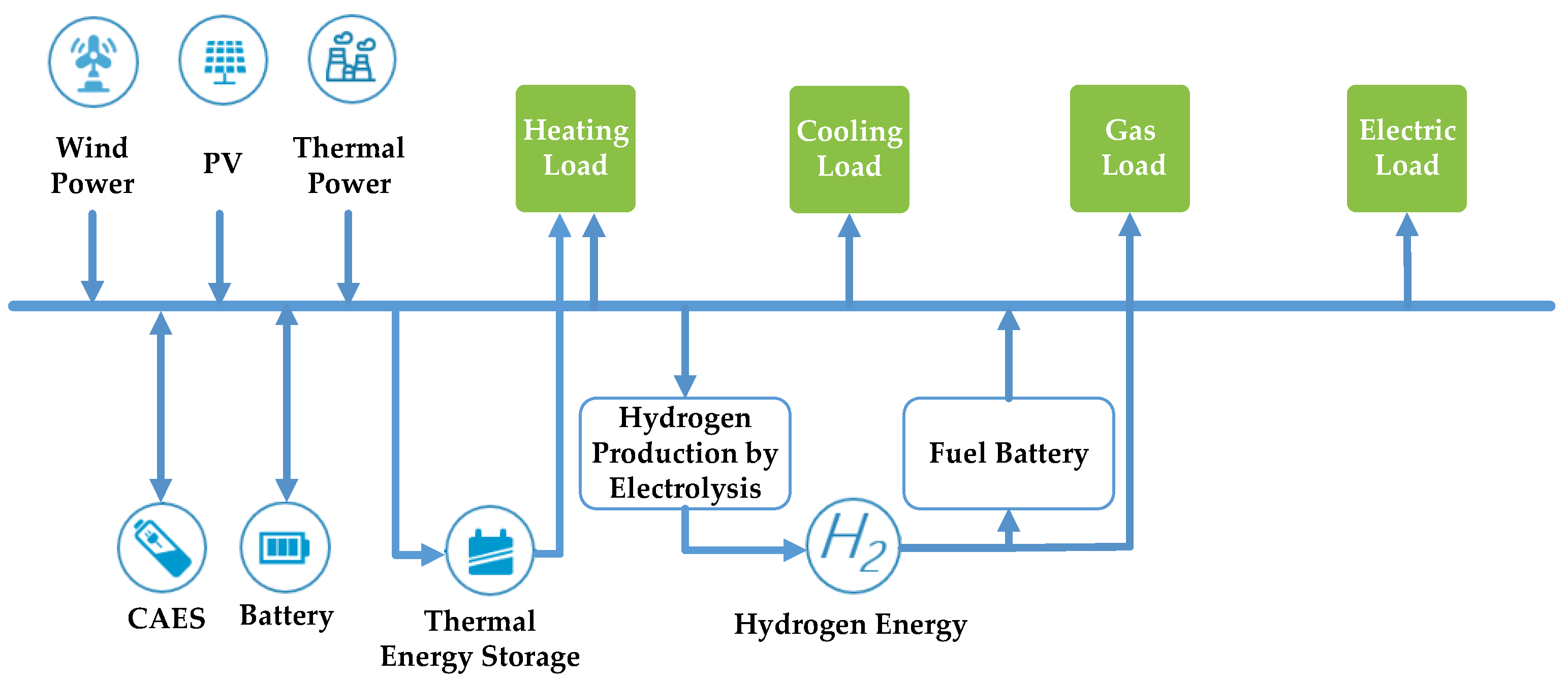



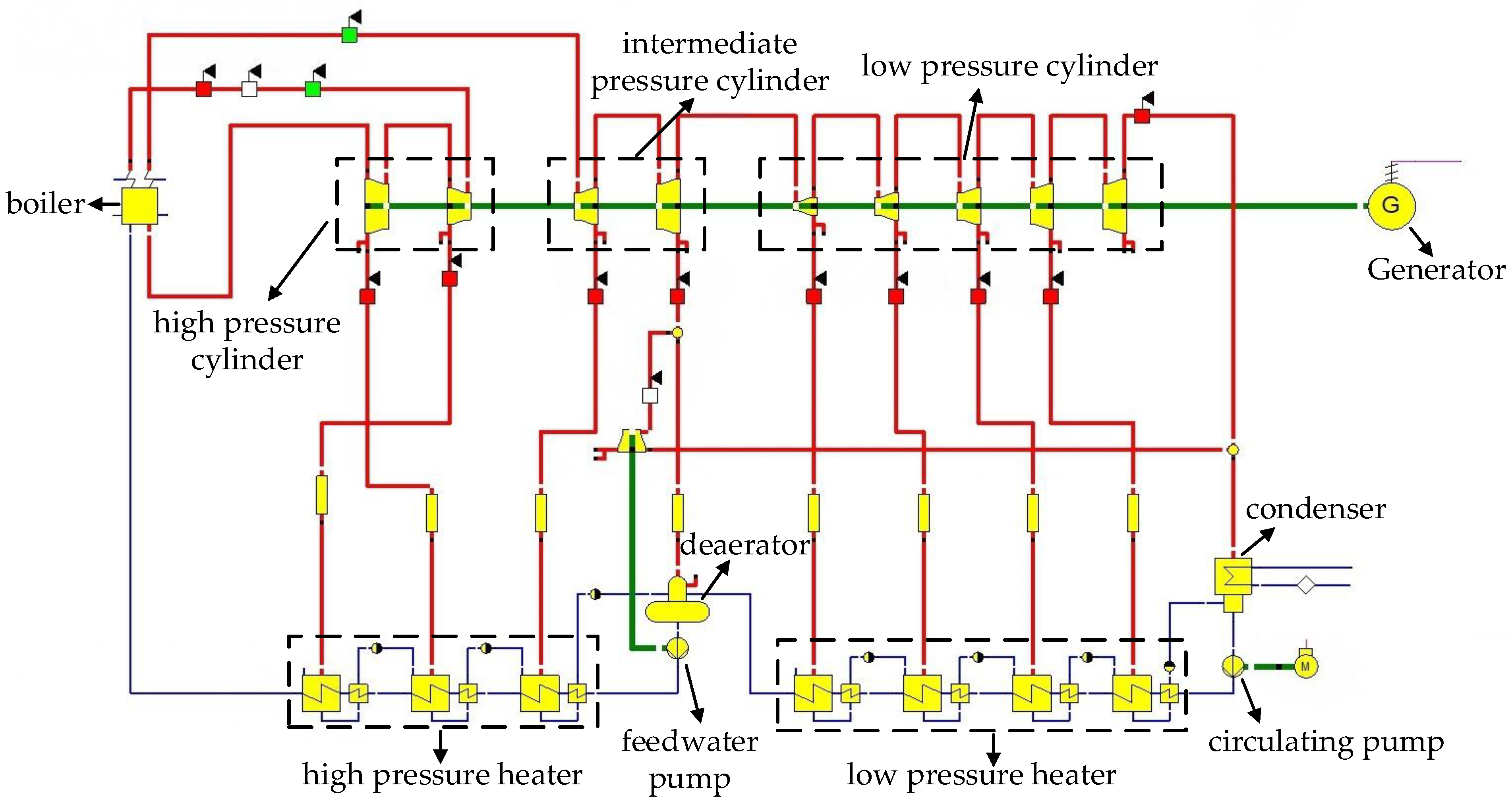



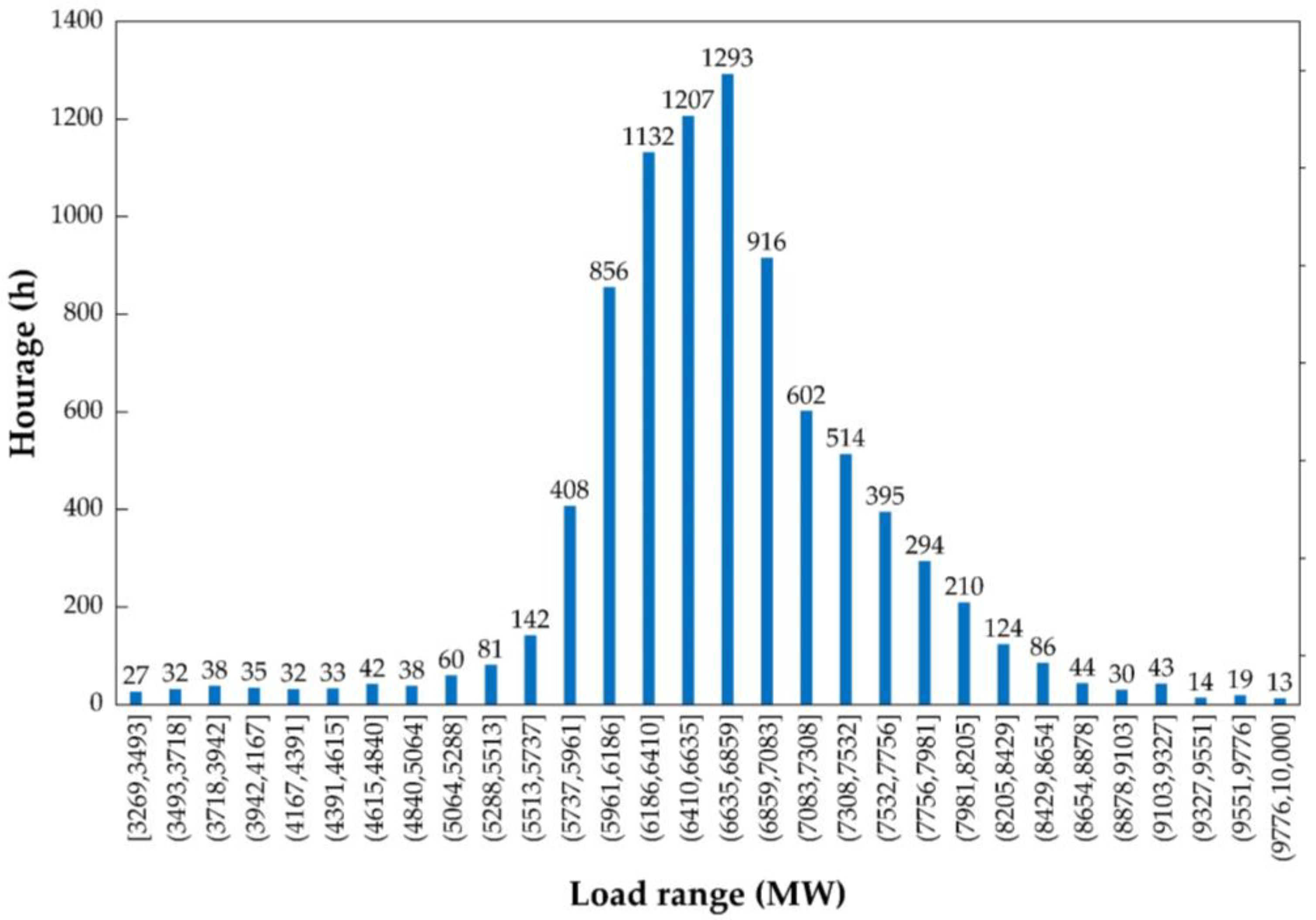


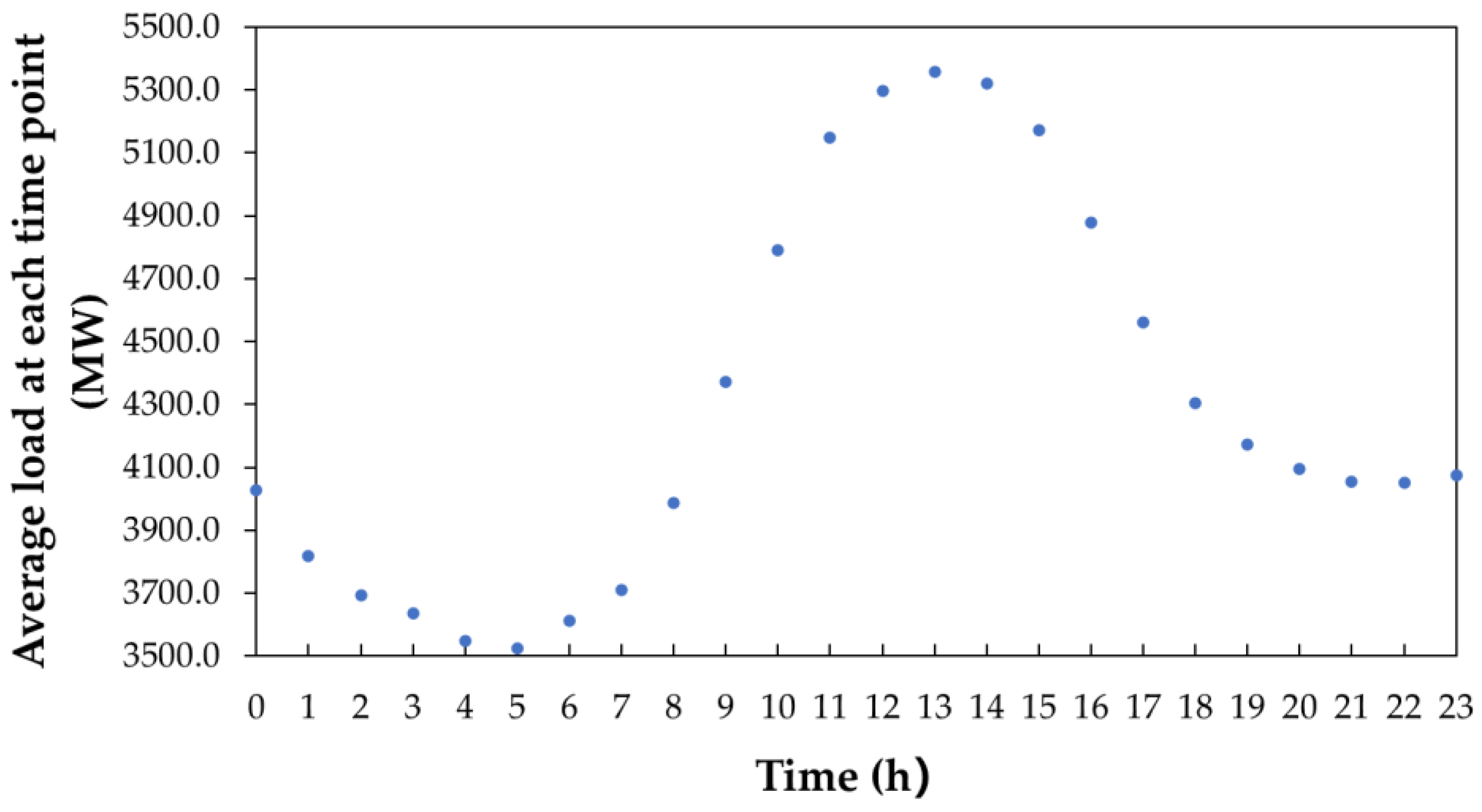
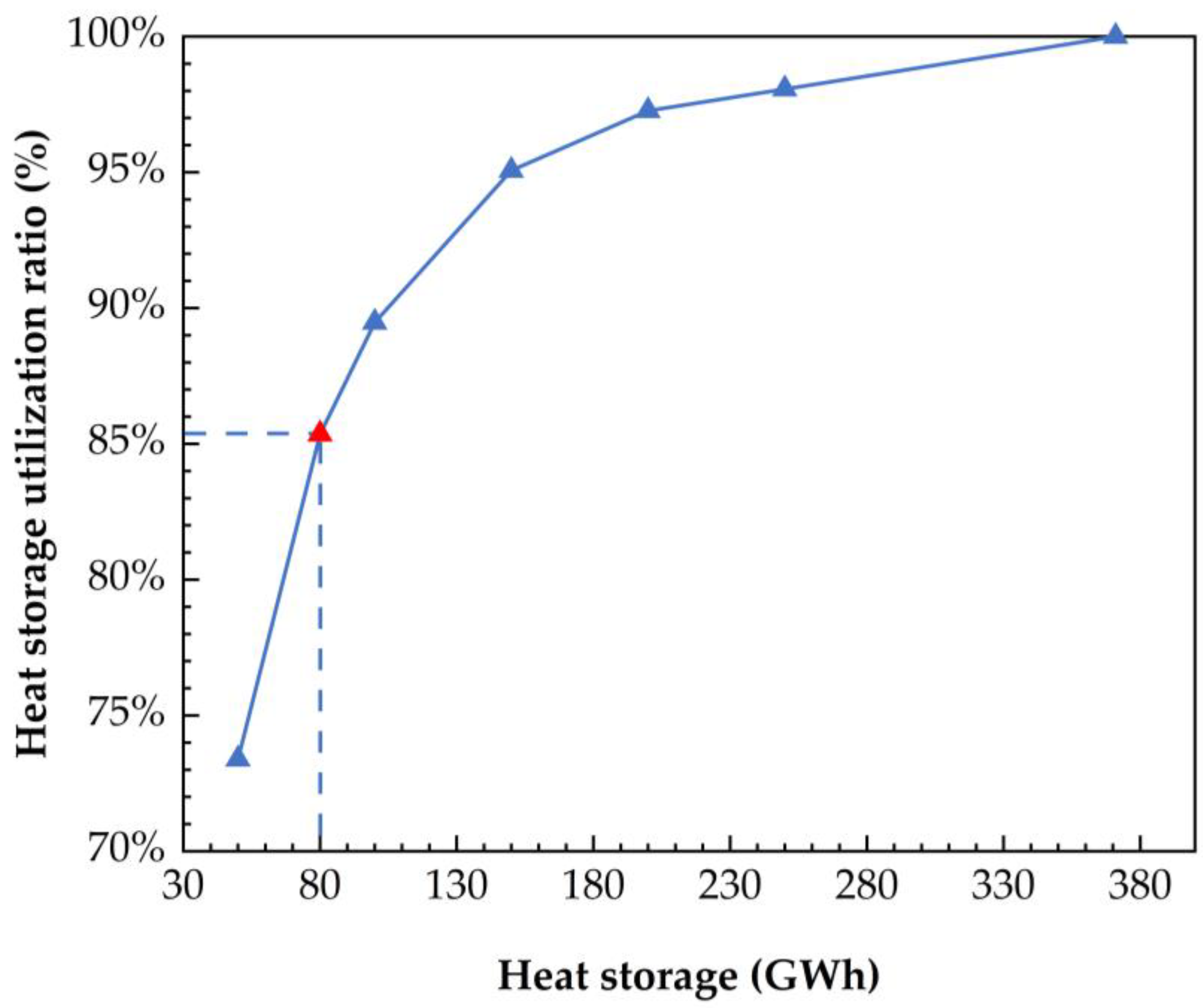
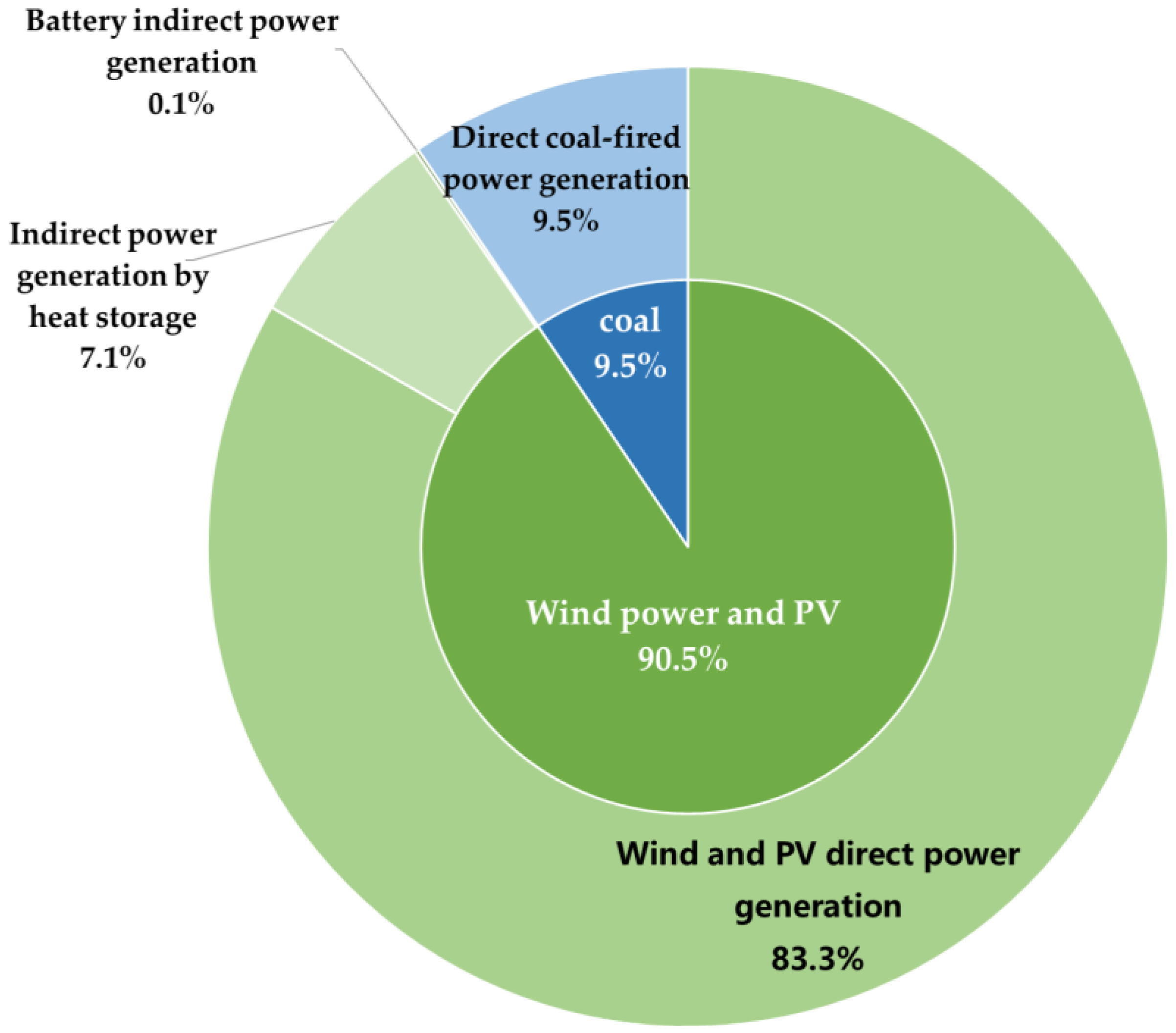
| Engineering Subject | Scale | Unit Investment | Total Investment (Billion RMB Yuan) |
|---|---|---|---|
| UHVDC transmission | Self-build and send to a certain province, about 200 km. | — | 350.00 |
| The power grid company builds, and the base pays the wheeling cost | — | 0 | |
| Wind power | 10,000 MW | 6000 Yuan/kW | 600.00 |
| PV | 2000 MW | 4000 Yuan/kW | 80.00 |
| Thermal power | 4 × 1000 MW | 3512 Yuan/kW | 140.48 |
| Thermal storage | 80,000 MWh reserves | 4000 Yuan/kW | 30.00 |
| Battery energy storage power station | 150 MWh | 1300 Yuan/kW | 1.90 |
| Clean energy heating | 100,000 m2 of heating area | — | 0.15 |
| Hydrogen production from wind power (hydrogenation) | 2000 standard cubic/h | — | 1.00 |
| Total investment | Self-build | 1203.53 | |
| The power grid company build | 853.53 | ||
Disclaimer/Publisher’s Note: The statements, opinions and data contained in all publications are solely those of the individual author(s) and contributor(s) and not of MDPI and/or the editor(s). MDPI and/or the editor(s) disclaim responsibility for any injury to people or property resulting from any ideas, methods, instructions or products referred to in the content. |
© 2023 by the authors. Licensee MDPI, Basel, Switzerland. This article is an open access article distributed under the terms and conditions of the Creative Commons Attribution (CC BY) license (https://creativecommons.org/licenses/by/4.0/).
Share and Cite
Liu, M.; Zhang, B.; Wang, J.; Liu, H.; Wang, J.; Liu, C.; Zhao, J.; Sun, Y.; Zhai, R.; Zhu, Y. Optimal Configuration of Wind-PV and Energy Storage in Large Clean Energy Bases. Sustainability 2023, 15, 12895. https://doi.org/10.3390/su151712895
Liu M, Zhang B, Wang J, Liu H, Wang J, Liu C, Zhao J, Sun Y, Zhai R, Zhu Y. Optimal Configuration of Wind-PV and Energy Storage in Large Clean Energy Bases. Sustainability. 2023; 15(17):12895. https://doi.org/10.3390/su151712895
Chicago/Turabian StyleLiu, Mingyi, Bin Zhang, Jiaqi Wang, Han Liu, Jianxing Wang, Chenghao Liu, Jiahui Zhao, Yue Sun, Rongrong Zhai, and Yong Zhu. 2023. "Optimal Configuration of Wind-PV and Energy Storage in Large Clean Energy Bases" Sustainability 15, no. 17: 12895. https://doi.org/10.3390/su151712895





